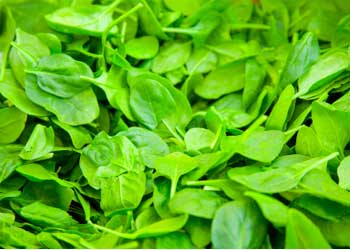Researchers at the U.S. Department of Agriculture and University of Maryland conducted a study to determine the level of nutrients in microgreens, specifically compared to more mature vegetables. Microgreens are tiny versions of vegetables, herbs, and other plants and are about one to two inches long with the stem and leaves still attached. The results of the study were published in the Journal of Agricultural and Food Chemistry.
As reported by NPR, researchers looked for large doses of vitamins and other phytochemicals, such as vitamin C, E, and beta carotene. Gene Lester, a researcher with the USDA, said the findings “totally knocked me over.”
The team found that all 25 varieties of microgreens had four to 40 times more nutrients than their matured counterparts. Lester said the findings give us a new insight into plants, “because these are little tiny seeds barely exposed to much light at all. And yet those compounds [nutrients] are there ready to go.”
Diets In Review’s resident dietitian, Mary Hartley, RD, wasn’t surprised by the results of the study. “The findings make sense because the young plant is rapidly accumulating nutrients during its period of rapid growth, and it is also still releasing nutrients stored in the seed,” she said. “I’ll bet microgreens are high in protein and very digestible, too.”
Hartley also noted that people don’t usually eat microgreens for the nutrients, they eat them for the unique flavor. “Think of microgreens as edible garnish or a flavor accent for food,” she said.
It is too early to guarantee that microgreens have more nutrients than mature vegetables and herbs. More studies still need to be done. This is because there are many factors affecting nutrients in the microgreens, according to Bhimu Patil, professor and director of the Vegetable and Fruit Improvement Center at Texas A&M University.
“This is a very good start, but there can be a lot of variation in nutrients depending on where you grow it, when you harvest, and the solid medium,” he said.
There is often confusion when it comes to sprouts and microgreens. Sprouts are seeds that grow for two days and include a stem, small roots, and underdeveloped leaves. Microgreens, on the other hand, require soil and sunlight and a week to grow before one can harvest them.
The U.S. government recommends that people shouldn’t eat sprouts as they have the possibility of containing E.Coli. However, there is also a possibility that microgreens may harbor threatening bacteria as well.
Microgreens may boast more nutrients than their more mature counterparts, but don’t count on them to replace normal size vegetables. “But if you throw a big bunch of microgreens on anything,” said Lester, “that’s a pretty good shot of vitamins.”
Also Read:
Candice Ball Lost 41 Pounds with P90X and Insanity
